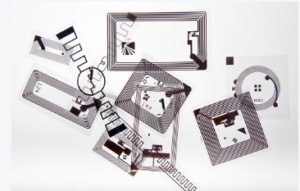From improved inventory management and better security to better customer experience, RFID is a great way to improve retail operations. RFID can improve productivity by up to 10% and reduce labour hours spent on inventory.
RAMPRFID RFID retail is also a great tool for monitoring theft and product loss. It can help retailers locate items in hard-to-reach areas and track frequently moved assets.
Improved Inventory Management
 RFID can help retailers ensure their inventory is accurate, reducing shrinkage and theft. It can be used throughout the supply chain to track products from initial inbound shipments to final sales, allowing retailers to cater to popular shopping trends like BOPIS (buy online, pickup in-store).
RFID can help retailers ensure their inventory is accurate, reducing shrinkage and theft. It can be used throughout the supply chain to track products from initial inbound shipments to final sales, allowing retailers to cater to popular shopping trends like BOPIS (buy online, pickup in-store).
RFID inventory counts are fast and efficient, meaning less time spent manually counting each item and more time available for customer service. It helps improve efficiencies across the entire facility, saving retailers money in the long run.
The technology can also be implemented into warehousing and storage systems to improve product picking. RFID-tagged inventory can be counted and sorted into individual items in seconds. It is far more effective and faster than a traditional barcode system, where employees must scan each piece of inventory one at a time.
Additionally, a well-designed and implemented system can provide retailers with a precise stock quantity so that customers are never disappointed in their purchases. It can also help companies avoid excess products sitting on the shelves, reducing warehousing and storage costs by up to 20-30 percent.
Another major benefit of RFID technology is its ability to help reduce employee theft and shrinkage. Retailers can use RFID to identify assets that are being stolen and replace them immediately, preventing a loss in the future.
Retailers can also use RFID to locate missing assets in the store, making it easier to find lost or stolen items. In addition, RFID can help to prevent the theft of expensive equipment, such as laptops and cash registers.
For these reasons, RFID can greatly assist retailers of all sizes. It can reduce theft, increase visibility, and make a company more profitable.
Many retail businesses can benefit from RFID, including clothing stores, grocery stores, and wedding dress shops. These industries have unique inventory needs that can be addressed with the help of RFID.
Enhanced Security
In today’s retail environment, retailers need to increase inventory accuracy while reducing costs and delivering a great customer experience. To address these issues, they’re turning to RFID technology.
In addition to improving product availability, RFID can reduce cycle count times by 96% and increase the visibility of stock levels. It allows for better decision-making and streamlined processes like automatic reordering when inventory levels are too low.
Additionally, RFID can help improve the security of high-value business assets like test equipment, transport packing and computer tech. These assets can be expensive to replace if they disappear or are stolen. By adding an RFID tag, you can ensure that they can only be used for the specific purpose you assigned them.
RFID can help monitor theft and employee fraud by pairing movement tracking data with sales and video data. It can allow you to identify shoplifting trends and build a case against a perpetrator with authorities.
Theft prevention is a huge issue in retail. In the US alone, it’s estimated that it costs $61.7 billion per year to deal with shoplifting. In combatting this, retailers use RFID to prevent employees from stealing from the store.
To do this, retailers use RFID to place tag readers at high-risk areas, such as exits, that can automatically trigger an alarm when someone attempts to leave with an item. It helps to curb theft and reduce administrative error by ensuring that staff can’t take an item they are not authorized to have.
It can significantly reduce costs and boost profits. It can also make it easier for employees to perform accurate counts and provide more insight into customers and their purchasing habits.
Another way retailers use RFID to enhance security is by deploying it in the warehouse and throughout the supply chain. It is because it can pinpoint the location of an item within milliseconds — much faster than manual scanning.
It can also increase efficiency at the point of sale by identifying which products have been left behind in a store and where they’re located. It can be invaluable in the event of a loss, as it’s easy for retailers to return or replace the item, avoiding missed sales opportunities and minimizing losses.
Comments are closed, but trackbacks and pingbacks are open.